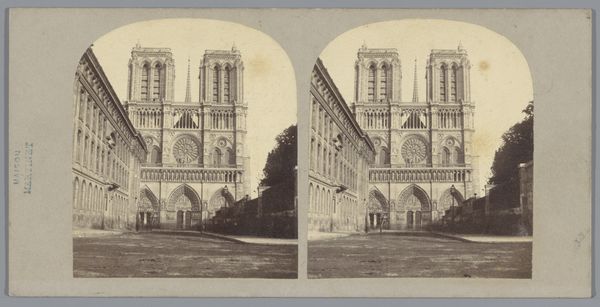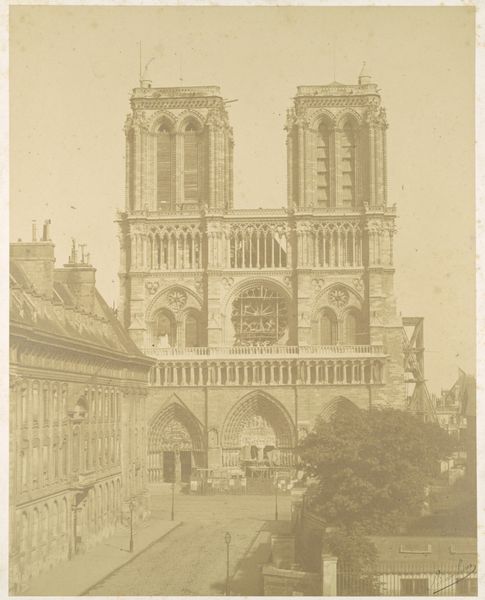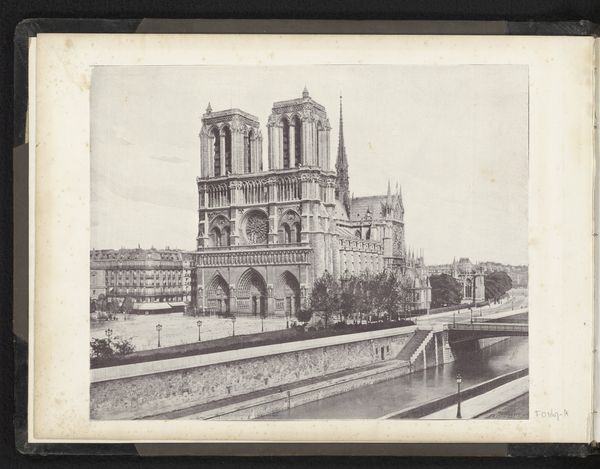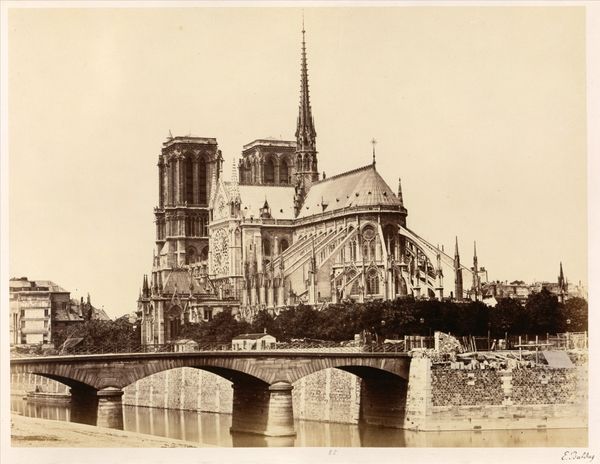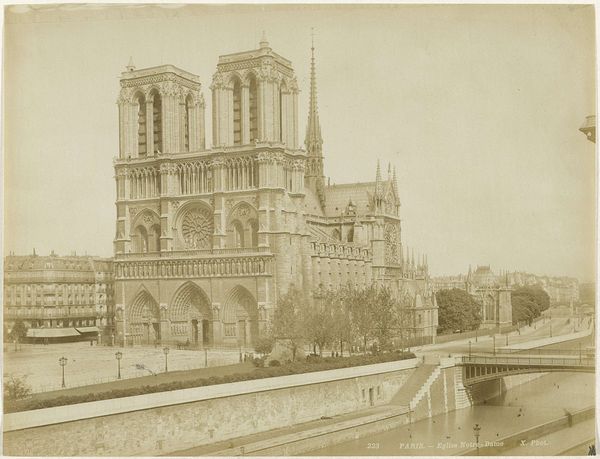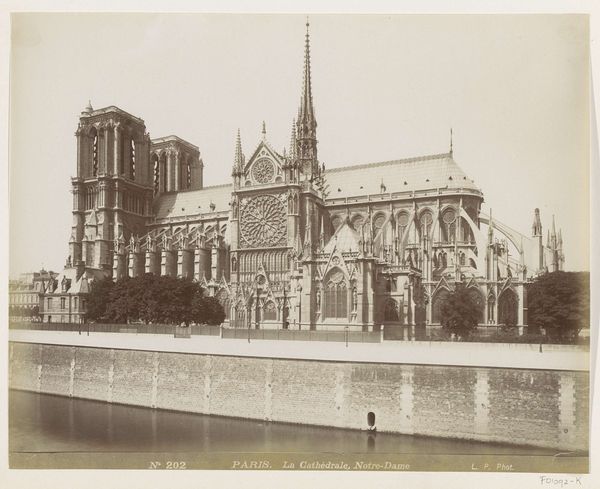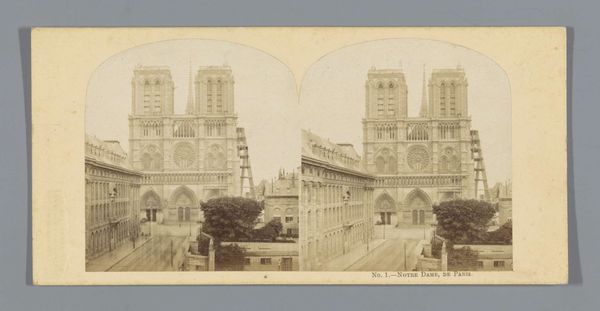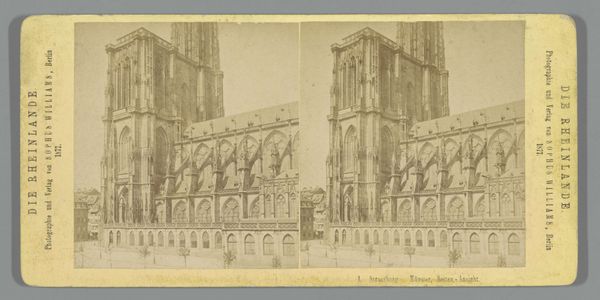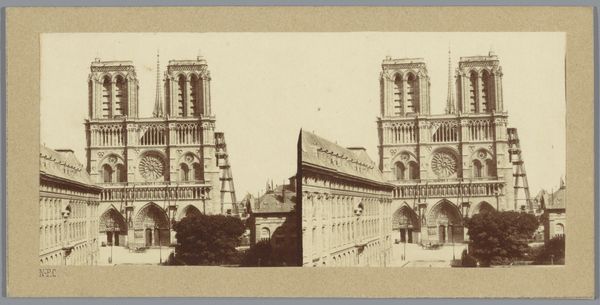
photography, gelatin-silver-print
#
landscape
#
photography
#
romanesque
#
gelatin-silver-print
#
cityscape
Dimensions: height 88 mm, width 178 mm
Copyright: Rijks Museum: Open Domain
Editor: Here we have a gelatin-silver print from around 1850-1880, showing the facade of Notre-Dame in Paris. What strikes me is its monumentality. The building dominates the scene, and yet there's a softness to the light that almost makes it feel approachable. What story do you think this image is telling? Curator: This image, produced relatively early in the history of photography, captures a specific moment in the cathedral's life and its relationship to Paris. Its monumentality certainly speaks to the power and influence of the Church and its place in the city. Think about it: photography was democratizing representation, but what was it choosing to represent? This photograph places Notre-Dame firmly within the public sphere, making it accessible as an object of consumption through the new technology. Editor: So it’s not just a picture of a beautiful building, it's about making it available to the masses? Curator: Precisely. The "Photographie" label and mention of "Stereoscope" suggest its intended purpose. These stereoscopic images were hugely popular, a form of mass entertainment. They brought monuments and faraway places into people’s homes. The image is subtly reinforcing social hierarchies too, even while appearing to democratize access through the reproduction. How might the photographic medium itself contribute to the sense of awe we feel looking at the building? Editor: I suppose the precision and detail inherent in photography lend a sense of authority and realism that other media might not? Curator: Exactly. Consider the alternative media of the period, like engravings. Photography staked its claim as objective truth. The Church, as the subject here, gains from that perceived authority, indirectly associating itself with progress and modernity through its technological representation. Editor: I never thought about photography in quite that way before – its ability to simultaneously democratize and reinforce existing power structures. Curator: The image reveals so much about the society and cultural values of the time and how new technologies influence image reception and public memory. There are complex social relationships embodied even in this "simple" photograph.
Comments
No comments
Be the first to comment and join the conversation on the ultimate creative platform.
